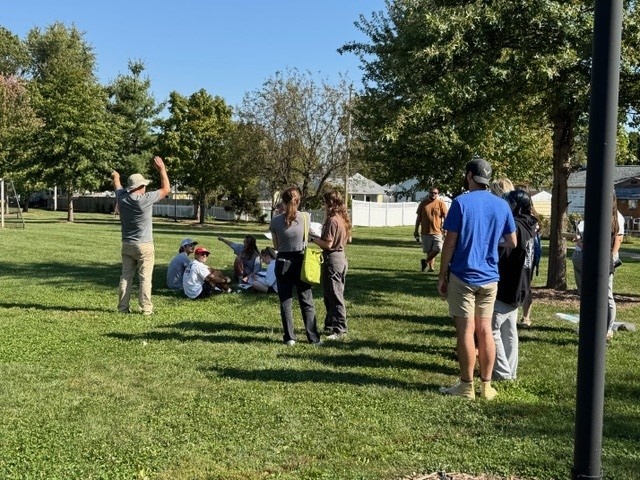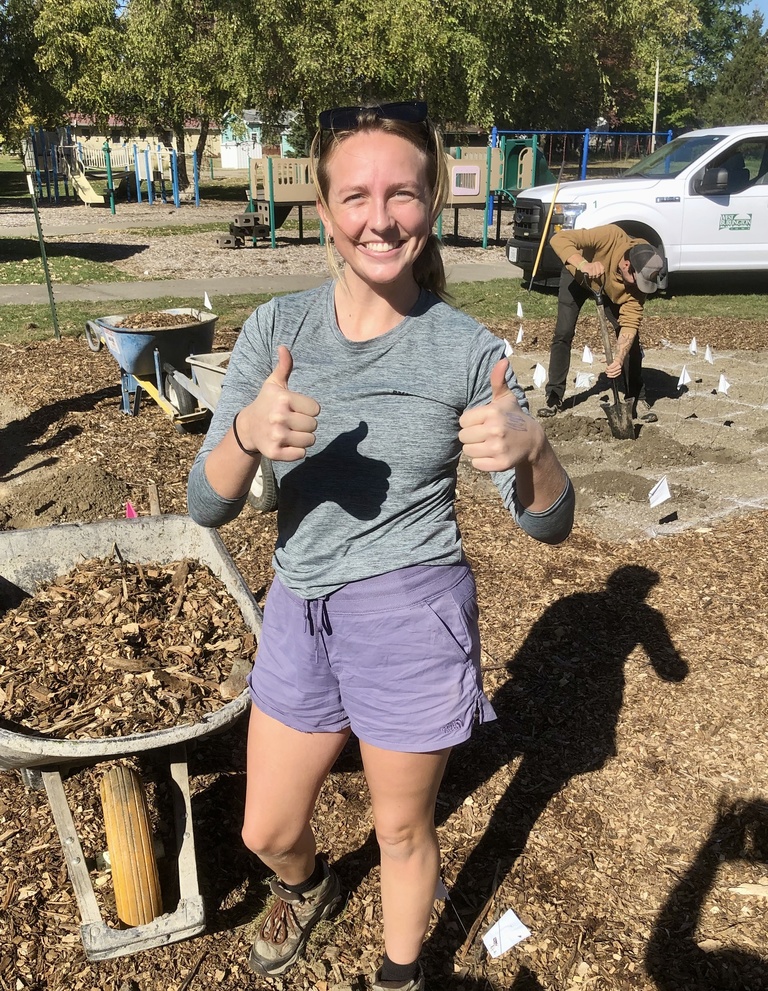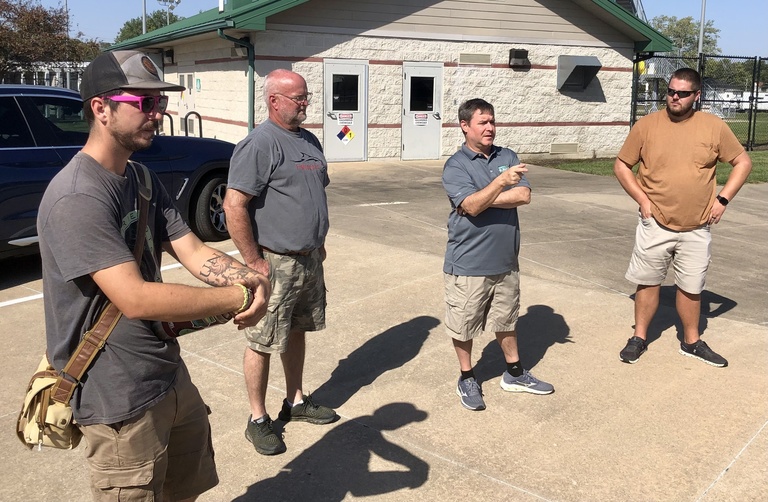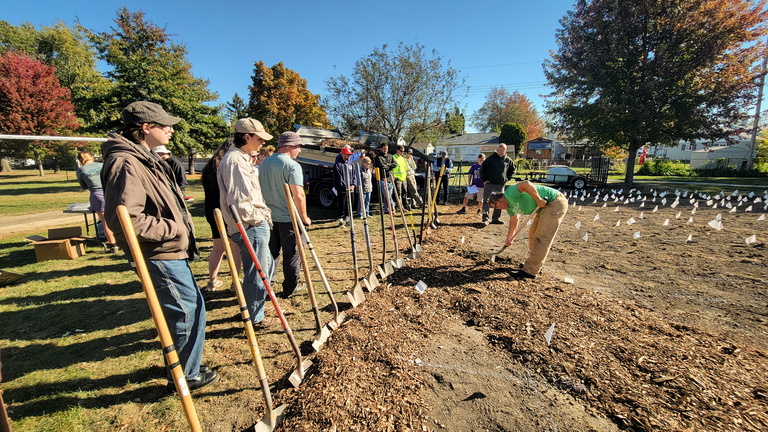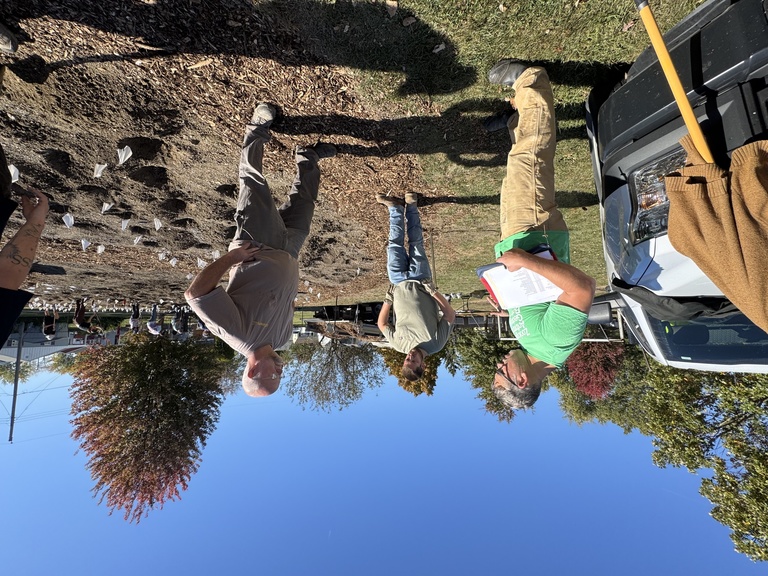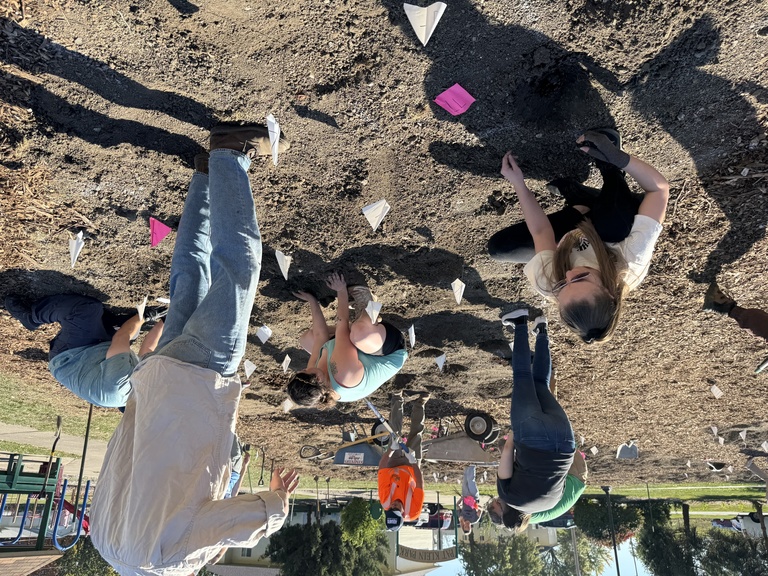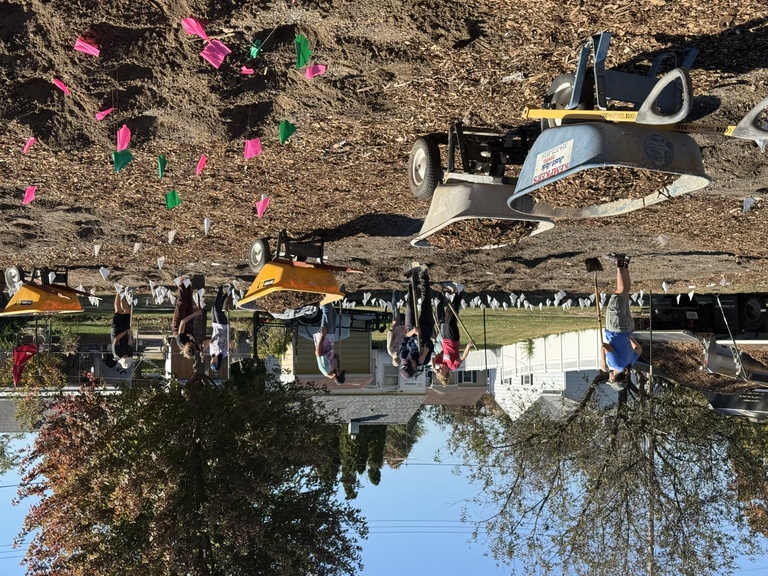For thousands of years prior to the arrival of European settlers, a combination of grasses and wildflowers covered more than 167 million acres of the central portion of North America. The Tallgrass Prairie ecosystem was astonishingly biodiverse, rivaling tropical rainforests in sheer numbers of plant and insect species alone.
The demise of the vital ecosystem was fast and nearly complete. Today, only one-tenth of one percent of the original tallgrass prairie in Iowa remains. Many Iowans have never seen a prairie or understand their ecological value.
Choosing a site
Mike Fallon, a UI faculty member (pictured below in green), is trying to change that. Fallon teaches “Prairie Restoration,” a field class that introduces students to restoring land to its original ecological state.
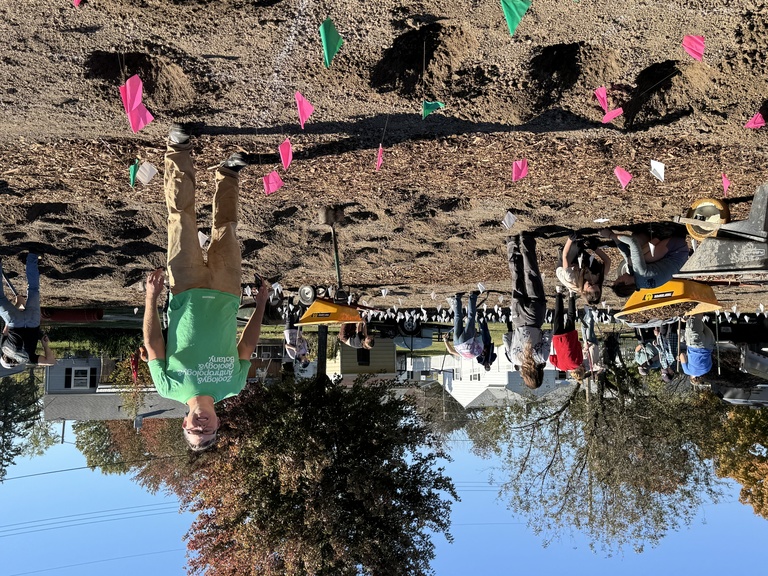
This fall, he and his class of 25 students joined IISC’s partnership with the city of West Burlington to create a pollinator garden. They visited the city three times to tour potential sites, meet with local experts and city staff, and, finally, to plant 400 native plants at Pat Klein Park.
“We always encourage site visits,” says Jennifer New, IISC’s community engagement specialist. “This class was unique in that they needed to go multiple time to consider the height of potential plantings, amount of sun, proximity to traffic, and other factors that helped them choose the location of their project.”
A student in the class, Ed Marion, found the trips to be useful toward imagining his future work. “Meeting with city officials and understanding that their priorities weren’t necessarily the same as ours was really helpful," says Marion, an an Environmental Science major who hopes to find work related to water quality. "It'’s real life,” he says, adding that he wishes more classes had this hands-on approach.
Inspiring younger generations
An important reason the UI students selected the site from a list of possibilities is its proximity to local public schools. The roughly 45’ by 45’ pollinator garden can’t replace original prairie. It will, however, provide educational and ecological benefits.
“If a young child wanders through these flowers and sees a skipper butterfly feeding on nectar, or a milkweed leaf beetle munching on A. tuberosa leaves, a future ecologist can be born,” says Samuel Hollingsworth, the owner of Prairie Roots Landscaping who served as a local adviser to the project.
He is especially hopeful for the new prairie’s potential to inspire, saying that “it's important to have such a setting as this in our municipal parks and urban lawnscapes so that these human/nature interactions can become more commonplace.”
Prairie's multitude of benefits
Although many of the students in the class are in environmental and sustainability-related majors, only a few had previous experience with prairies. They were surprised by the many benefits of North America’s most endangered ecosystem.
To name a few, tallgrass prairies improve water infiltration and reduce runoff. The grasses’ long roots, which can extend up to 15-feet, help prevent soil erosion and ensure the plants are drought resistant. They also provide habitat for birds and pollinators and store carbon underground.
Researchers are discovering that even small prairies can make a meaningful impact. A recent New York Times article highlighted the benefits of prairies strips planted by Iowa farmers. This doesn’t mean there isn’t resistance to them and hurdles in getting even a relatively small prairie started.
More complex than it seems
Ron Stumbaugh, a Sustainability Science major from Clinton who participated in the planting and admits he knew “absolutely zero” about prairies prior to taking Fallon’s class, thought the process would be easy. “It’s a natural system; just plant some seeds,” he shrugs his shoulders and laughs at his naivete. “But first there might be ordinances against certain kinds of plants. Then there are invasive species to control. And there are effects from pesticides.”

There are also plenty of naysayers who aren’t fond of a prairie’s unkempt appearance. “I truly hope this planting proves that native urban habitat is more than just a patch of ‘weeds,’” Hollingsworth commented.
Marion said they selected available plants with some of these challenges in mind. “We made our choices based on height, sun and water requirements, bloom times, and colors,” he says, noting that it was more complex than he’d imagined.
The first of many
Gregg Mandsager, West Burlington’s city manager who collaborated with Fallon to make the project a reality, wants this prairie to be the first of many. He plans to use the city’s website, on-site signage, and public talks to share information that will help others plant their own pollinator gardens. He’s also trying to update the city’s zoning code to make it friendlier to native species.
“We now have a model for planting in the future,” Mandsager says. “Mike and his students gave us a process to follow for installation and ongoing maintenance. “ Noting that Fallon’s enthusiasm is contagious, he was excited by how quickly and seamlessly the project came together.
Fallon, likewise, was pleased to find city officials so open to working with UI students. Public gardens can be fraught with difficulties. "It takes a creative and thoughtful design, community engagement and positive open-minded approach to guarantee success," he says. Next year, Fallon will offer Prairie Restoration again and looks forward to collaborating with IISC’s future partners.

